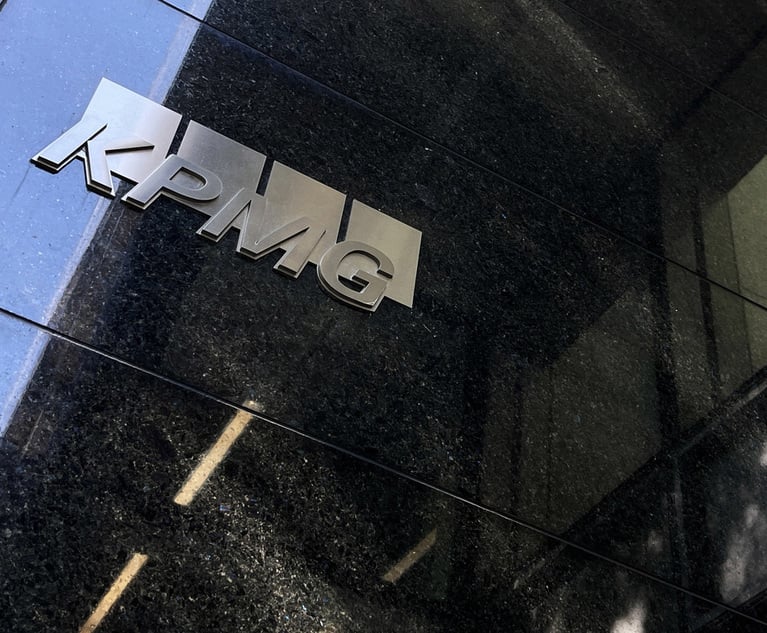UK Top 50: leading firms put economic woes behind them as revenues hit £14bn high
Revenue across the UK's 50 largest law firms soared to a new high of £14.4bn in 2013-14, with the group seemingly having put past economic uncertainty behind it to achieve a fourth consecutive year of fee income growth.
August 31, 2014 at 07:13 PM
7 minute read
Revenue across the UK's 50 largest law firms soared to a new high of £14.4bn in 2013-14, with the group seemingly having put past economic uncertainty behind it to achieve a fourth consecutive year of fee income growth.
Average profits per equity partner (PEP) have also steadily crept back to levels approaching 2007-08′s record high of £616,000.
Combined turnover across the group rose by 6.2% with fee income per firm standing at £270.3m. The average revenue increase across the top 50 was 7.1%. PEP, meanwhile, climbed by 6.3% to reach an average figure of £592,000.
With other key metrics also on the rise, results from the most recent financial year suggest a sector that has barely taken a backward step in the wake of Lehman's 2008 collapse. Average PEP across the top 50 as a whole has fallen just twice since then: once in the immediate aftermath of the banking crisis in 2008-09, when it fell by 17% to £502,000; and last year when it dipped marginally to £556,000. Revenue has fallen only once, in 2009-10, and even then by only 0.4%.
Meanwhile, the all-important revenue per lawyer (RPL) figure – considered by some as a better measure than PEP for benchmarking success – reached a new high of £336,000 compared with £331,000 in 2012-13. The figure was £321,300 in 2007-08, before firms were forced to embark on the extensive cost-cutting initiatives that have seen many London-based outfits opening lower-cost legal centres outside the capital in a bid to provide a cheaper alternative to cost-conscious clients.

A closer look
As with any statistical analysis though, the devil is very much in the detail. While results averaged out across the whole group are strong – PEP grew more than in any post-crisis year since the initial 8.8% rebound reported in 2009-10, and revenue growth was almost on par with that reported by firms in 2007-08 – they mask significant variations in performance at individual firms.
The impact of consolidation – with Ashurst's merger with Ashurst Australia going live in November 2013 – should also not be underestimated. Indeed, stripping Ashurst's 81.4% rise in turnover out of the equation, revenue growth among the whole group climbed by just 5.6%.
Furthermore, only 16 firms achieved revenue rises matching last year's group-wide average of 6.9%, while 26 firms met or surpassed the mean 2012-13 PEP growth.
At the top end of the tables, Macfarlanes and Mishcon de Reya increased revenues by 22.4% and 18% respectively, while Osborne Clarke, Berwin Leighton Paisner and Watson Farley & Williams each achieved PEP rises of at least 25% year on year.
In contrast, five firms – Hill Dickinson, Speechly Bircham, Trowers & Hamlins, Ince & Co and CMS Cameron McKenna – all saw revenues fall, with a further four reporting revenue growth of under 1%. Nine firms experienced a dip in profitability.
Hogan Lovells chief executive Steve Immelt says: "The market has improved. You can see that in the deal activity of the first seven months of this year. I don't think we have the broad-based economic activity we enjoyed for an extended period in the 2000s though, and that people came to think was normal.
"There is definitely more activity, more private money in the world and more demand for advice, but growth is single-digit now – it isn't what it was."
Tim Eyles, managing partner at Taylor Wessing, where revenue climbed by 7% and PEP by 20%, adds: "I think it's a more nuanced market and always will be. The power has shifted to the client and isn't going to return. The market has picked up and certainly we are seeing an uplift in transactions, but there's still pressure on fees."

Outliers
The high-achieving outliers in 2013-14 make it more difficult to identify which sectors of the market outperformed others. As a group, the 10 largest firms by revenue and the global leaders formed through transcontinental mergers outstripped the rest of the top 50 when it came to revenue and PEP increases. This strong performance was driven in part by Ashurst Australia and by resurgent years, in terms of profit, from Herbert Smith Freehills and Hogan Lovells.
For consistency when analysing revenue and PEP for verein-style firms with multiple profit pools, our primary ranking includes revenue, PEP and lawyer numbers for only the part of the business containing the UK partnership. A separate ranking looking at how these firms' global revenues compare with their UK peers is included on pages 6-7.
Elsewhere, results were mixed within each grouping. Firms with regional presences across the UK fared well, achieving average revenue growth of 6.1% and average PEP growth of 6.9%, driven in particular by strong performances from Osborne Clarke and Mills & Reeve on the revenue front and by Eversheds on PEP. However, this contrasts with Addleshaw Goddard and Weightmans posting PEP falls of 14.2% and 7.7% respectively. Meanwhile, Hill Dickinson's 3% increase in PEP masks the fact that its equity partner count fell by nearly 10%.
Similarly, the magic circle had a strong year overall, with revenue climbing by 3.7% to £5.5bn against a 7.7% increase in PEP. However, within the group Freshfields Bruckhaus Deringer saw revenues increase by under 1% against a 5.9% rise in PEP, while star performer Clifford Chance posted a 7% increase in revenue against a 14% hike in PEP. Freshfields senior partner Will Lawes says that his firm's lower revenue rise is partly down to movements in currency, claiming that underlying growth, given like-for-like currency conversions, would have been "around 4-5%".
Demonstrating both the gulf in scale between the magic circle firms and their smaller peers and the room for significant consolidation lower down the rankings, combined revenues across the five firms came to marginally more than the tally for all of the firms ranked from 11-50 in this year's table.
Unsurprisingly, the group's RPL figure also dwarfs many of their peers this year. Headed by Slaughter and May with an estimated RPL of £873,000, the magic circle are among only eight firms within the UK top 50 to post an RPL of more than £400,000. This contrasts sharply with firms at the opposite end of the scale, where DAC Beachcroft, Berrymans Lace Mawer, Weightmans and Gateley all have RPL figures of less than £195,000.
Allen & Overy managing partner Wim Dejonghe says: "The market generally looks good. I think the magic circle firms have held up well. There is a misrepresentation around that we are losing market share, but if you look at the results that's not the case. It's the middle sector where firms are struggling more. For small firms to grow revenue by maybe 10%, that could be down to one deal. We start as a sizeable revenue business so a 2-3% rise is a big number."
Linklaters managing partner Simon Davies believes the upturn in M&A activity means the magic circle are likely to continue to see performance improve. "We have seen a sharp pick-up in M&A, which accounts for a significant part of our business, and I think firms with that strength are likely to have a positive year," he says.
"We're only at the foothills of the change that will happen over the next 10 years in terms of consolidation and globalisation and other sectoral change. There's a pent-up need for each of these in the market."
This content has been archived. It is available through our partners, LexisNexis® and Bloomberg Law.
To view this content, please continue to their sites.
Not a Lexis Subscriber?
Subscribe Now
Not a Bloomberg Law Subscriber?
Subscribe Now
NOT FOR REPRINT
© 2025 ALM Global, LLC, All Rights Reserved. Request academic re-use from www.copyright.com. All other uses, submit a request to [email protected]. For more information visit Asset & Logo Licensing.
You Might Like
View All
KPMG Moves to Provide Legal Services in the US—Now All Eyes Are on Its Big Four Peers

International Arbitration: Key Developments of 2024 and Emerging Trends for 2025
4 minute read
The Quiet Revolution: Private Equity’s Calculated Push Into Law Firms
5 minute read
'Almost Impossible'?: Squire Challenge to Sanctions Spotlights Difficulty of Getting Off Administration's List
4 minute readTrending Stories
- 1Public Notices/Calendars
- 2Monday Newspaper
- 3Judicial Ethics Opinion 24-98
- 4'It's Not Going to Be Pretty': PayPal, Capital One Face Novel Class Actions Over 'Poaching' Commissions Owed Influencers
- 511th Circuit Rejects Trump's Emergency Request as DOJ Prepares to Release Special Counsel's Final Report
Who Got The Work
Michael G. Bongiorno, Andrew Scott Dulberg and Elizabeth E. Driscoll from Wilmer Cutler Pickering Hale and Dorr have stepped in to represent Symbotic Inc., an A.I.-enabled technology platform that focuses on increasing supply chain efficiency, and other defendants in a pending shareholder derivative lawsuit. The case, filed Oct. 2 in Massachusetts District Court by the Brown Law Firm on behalf of Stephen Austen, accuses certain officers and directors of misleading investors in regard to Symbotic's potential for margin growth by failing to disclose that the company was not equipped to timely deploy its systems or manage expenses through project delays. The case, assigned to U.S. District Judge Nathaniel M. Gorton, is 1:24-cv-12522, Austen v. Cohen et al.
Who Got The Work
Edmund Polubinski and Marie Killmond of Davis Polk & Wardwell have entered appearances for data platform software development company MongoDB and other defendants in a pending shareholder derivative lawsuit. The action, filed Oct. 7 in New York Southern District Court by the Brown Law Firm, accuses the company's directors and/or officers of falsely expressing confidence in the company’s restructuring of its sales incentive plan and downplaying the severity of decreases in its upfront commitments. The case is 1:24-cv-07594, Roy v. Ittycheria et al.
Who Got The Work
Amy O. Bruchs and Kurt F. Ellison of Michael Best & Friedrich have entered appearances for Epic Systems Corp. in a pending employment discrimination lawsuit. The suit was filed Sept. 7 in Wisconsin Western District Court by Levine Eisberner LLC and Siri & Glimstad on behalf of a project manager who claims that he was wrongfully terminated after applying for a religious exemption to the defendant's COVID-19 vaccine mandate. The case, assigned to U.S. Magistrate Judge Anita Marie Boor, is 3:24-cv-00630, Secker, Nathan v. Epic Systems Corporation.
Who Got The Work
David X. Sullivan, Thomas J. Finn and Gregory A. Hall from McCarter & English have entered appearances for Sunrun Installation Services in a pending civil rights lawsuit. The complaint was filed Sept. 4 in Connecticut District Court by attorney Robert M. Berke on behalf of former employee George Edward Steins, who was arrested and charged with employing an unregistered home improvement salesperson. The complaint alleges that had Sunrun informed the Connecticut Department of Consumer Protection that the plaintiff's employment had ended in 2017 and that he no longer held Sunrun's home improvement contractor license, he would not have been hit with charges, which were dismissed in May 2024. The case, assigned to U.S. District Judge Jeffrey A. Meyer, is 3:24-cv-01423, Steins v. Sunrun, Inc. et al.
Who Got The Work
Greenberg Traurig shareholder Joshua L. Raskin has entered an appearance for boohoo.com UK Ltd. in a pending patent infringement lawsuit. The suit, filed Sept. 3 in Texas Eastern District Court by Rozier Hardt McDonough on behalf of Alto Dynamics, asserts five patents related to an online shopping platform. The case, assigned to U.S. District Judge Rodney Gilstrap, is 2:24-cv-00719, Alto Dynamics, LLC v. boohoo.com UK Limited.
Featured Firms
Law Offices of Gary Martin Hays & Associates, P.C.
(470) 294-1674
Law Offices of Mark E. Salomone
(857) 444-6468
Smith & Hassler
(713) 739-1250








